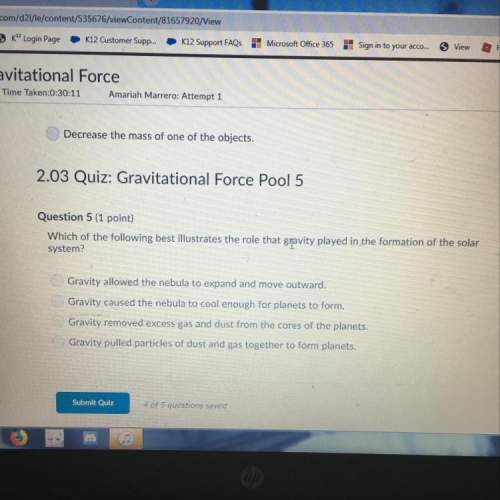
Chemistry, 07.03.2020 05:58 catsareokiguess
Many free radicals combine to form molecules that do not contain any unpaired electrons. The driving force for the radical–radical combination reaction is the formation of a new electron‑pair bond. Consider the chemical equation. N ( g ) + NO ( g ) ⟶ NNO ( g ) Write Lewis formulas for the reactant and product species in the chemical equation. Include nonbonding electrons.

Answers: 2


Another question on Chemistry


Chemistry, 22.06.2019 04:30
Which statement best describes the relationship between period and frequency of light waves? a) in wave b the period increases and the frequency decreases from wave a. b) in wave a the period increases and the frequency decreases from wave b. c) in wave b the period is shorter and the frequency is greater than in wave a. d) in wave a the period is shorter and the frequency is greater than in wave b.
Answers: 1

Chemistry, 22.06.2019 17:00
What is the approximate vapor pressure when the gas condenses at 70 degrees celsius
Answers: 2

You know the right answer?
Many free radicals combine to form molecules that do not contain any unpaired electrons. The driving...
Questions

English, 05.12.2021 01:00

Mathematics, 05.12.2021 01:00

Law, 05.12.2021 01:00


Mathematics, 05.12.2021 01:00


Computers and Technology, 05.12.2021 01:00

Mathematics, 05.12.2021 01:00

Arts, 05.12.2021 01:00




Mathematics, 05.12.2021 01:00

Mathematics, 05.12.2021 01:00

Mathematics, 05.12.2021 01:00

Chemistry, 05.12.2021 01:00




Mathematics, 05.12.2021 01:00





